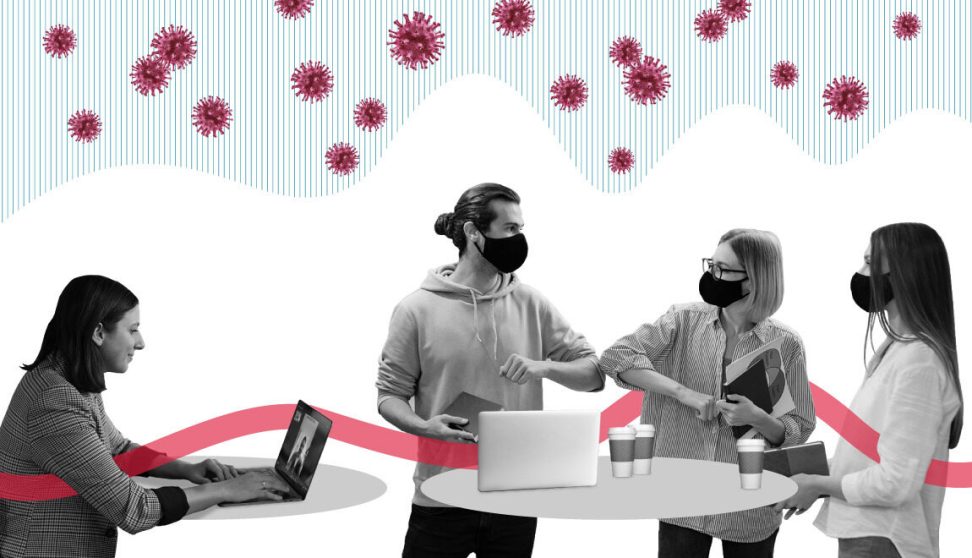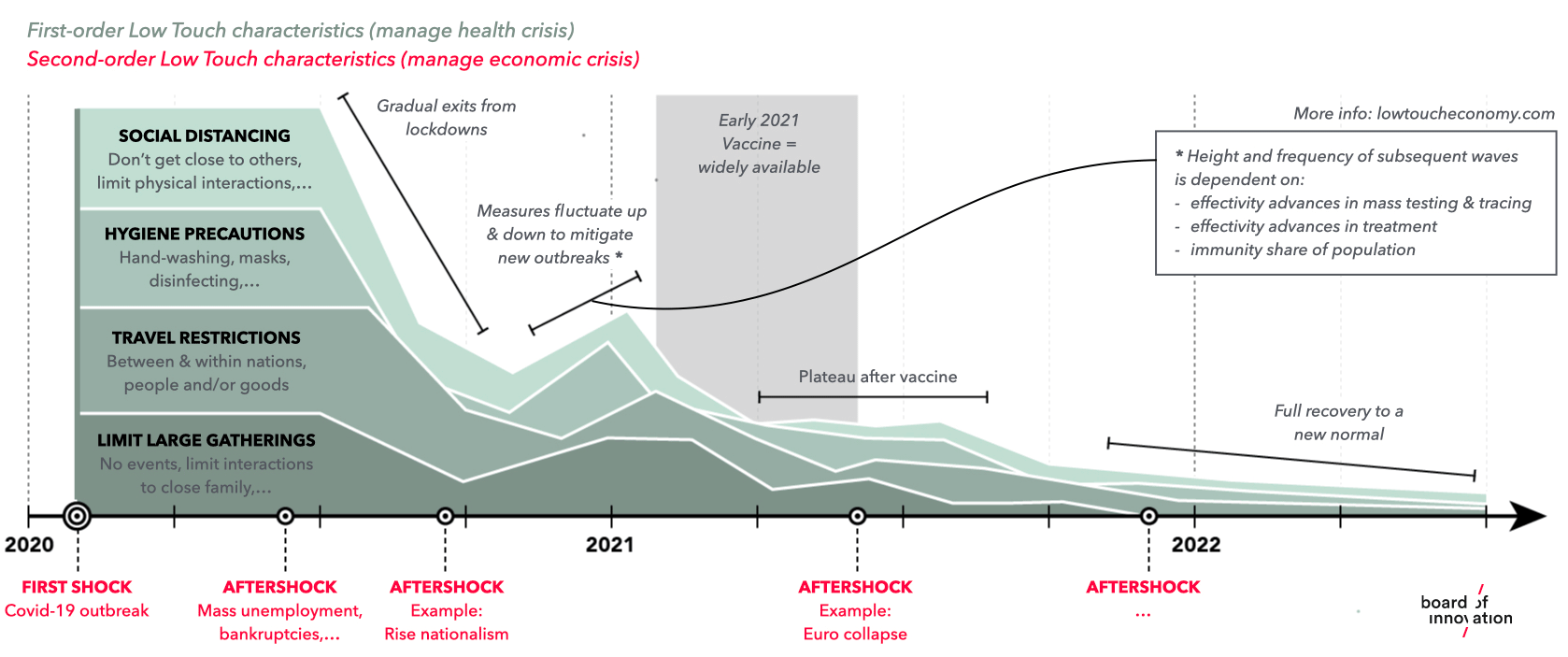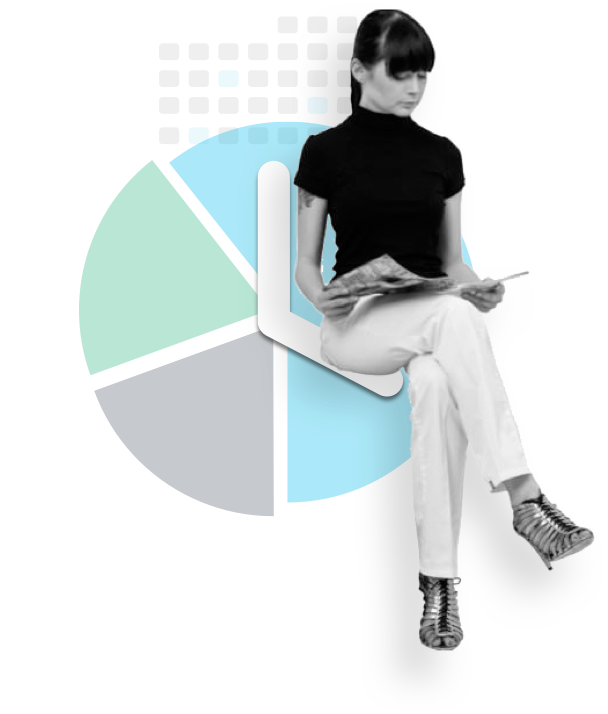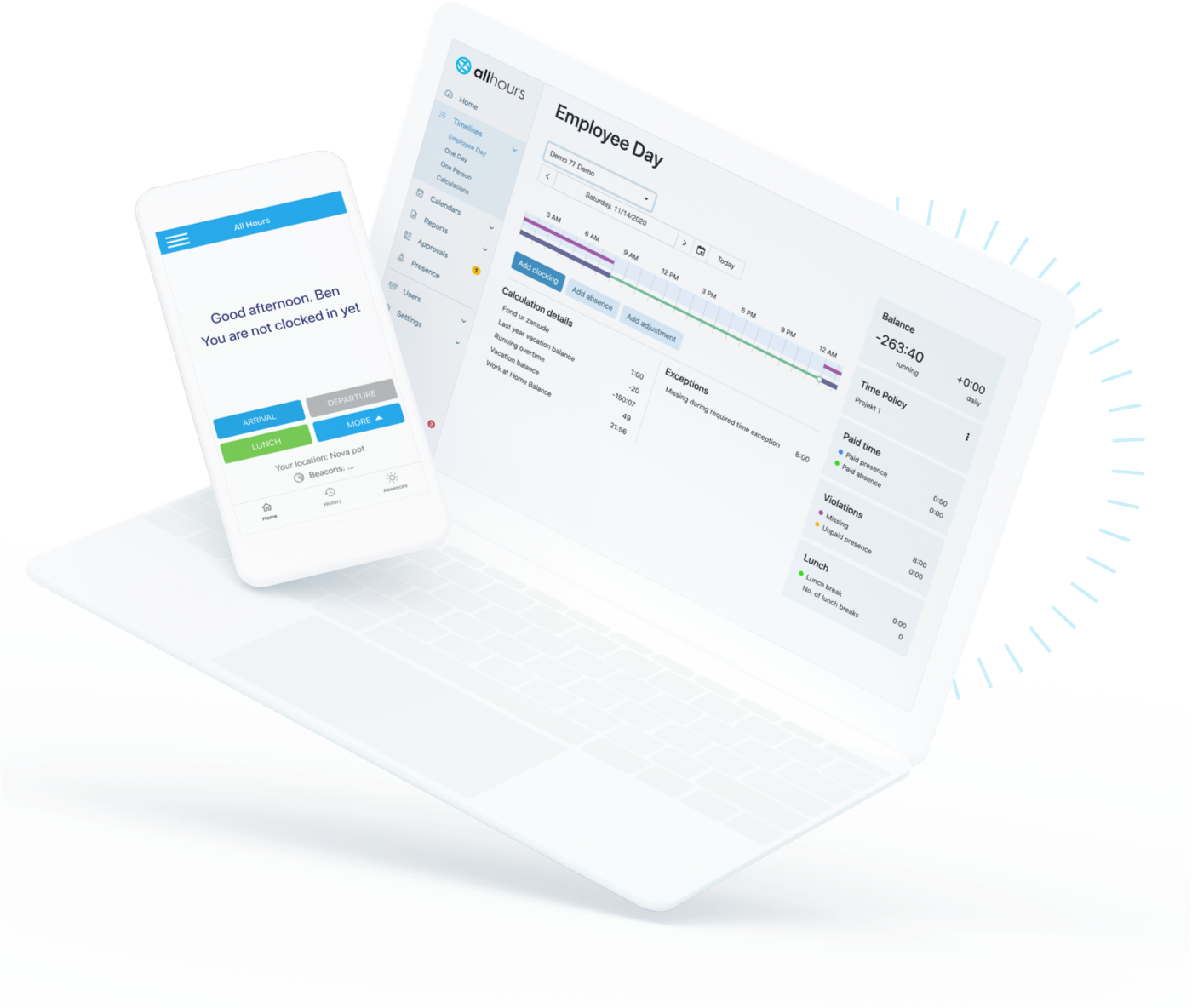The Low-Touch Economy – What it is and why it's important for your business

The low-touch economy, also called the contactless economy, refers to interpersonal and other interactions (for example with surfaces, handles etc.) that consist of no or minimum physical contact.
The main idea of the low-touch economy is to prevent germs spreading through touching different surfaces or being in close and direct proximity of other people in business environments.
There are many measures that fit into the low-touch-economy umbrella, such as social distancing, video conferencing, glass protection walls and visors, remote work, and so on. We can also add solutions such as automatic doors, limiting the number of people in one room, and travel restrictions to the list.
In this article you will learn everything you need to know about the low-touch economy.
COVID-19 will bring new winners – the companies in the right sector and the most adaptable ones
Covid-19 is an evident breaking point which has struck worldwide and affected every one of us. China was being faced with the epidemic two months before any other country, with the first SARS virus still a vivid memory for some.
Observing the concepts of fighting against the virus and learning from experience is valuable training for the global population and economy.
Furthermore, every business owner as well as every individual needs to carefully think things through and find the right solution to come out as a winner. People are in different situations, and for those who not only strive to survive the pandemic but want to make their business thrive and grow even during economic collapse, things are even more challenging.
Statistics on past global crises show that only 10% of the companies that were challenged with economic breakdowns managed to escape the collapse and navigate to a new blue ocean.
Each industry and market has their own specifics; however, there are some principles of crisis management that can be efficiently used when managing companies in times of social and economic changes such as we are facing right now.
We were hit by a big COVID-19 tsunami that we have still not overcome (and new similar pandemics are just a question of time), so we need to use the right tools to build protective shields and preserve our business growth.
The low-touch economy, together with its tools and technologies, is definitely one aspect that the post-COVID-19 winners will embrace.
There are two elements of the low-touch economy that almost any business can adopt to be better prepared for similar situations:
- Embracing remote work and becoming a digital-first company, something that is most often accompanied by innovation on the business model level,
- And if that is not possible, at least providing the safest possible environment on the premises.

Image source: https://www.boardofinnovation.com/blog/what-is-the-low-touch-economy/
The Low Touch Economy and remote work
More than ever before, employees are able to work from anywhere, even the comfort of their homes. This new experience will inevitably lead to greater acceptance and more wide-spread implementation of mobile workplaces and flexible working hours.
Providing the remote work option for employees is one of the most obvious ways to adapt to the low-touch economy. If employees are working from home, there is no physical touch between them, and thus lower risk of transmission of infections.
You can read more about remote work in the following articles:
- The best remote work tips – How to make remote working work for you
- Remote Work – Advantages and Disadvantages
- Flexible working arrangements are on the rise. Here’s why.
- Part-time work: definitions, pitfalls, and pluses
- Flexible work policy - How to successfully implement one at your workplace
- How to work from home, stay ultra-productive, and be super successful
One thing is certain: our society and the way we live and work together will change, and our solutions must reflect this change to support companies in their efforts to remain competitive in the 'new normal'.
However, introducing remote work also poses some technical issues for companies. Post-Covid-19 workforce-management software will have to offer self-service and mobile apps with a learning curve of almost zero. To achieve this, it’s best offer your employees an intuitive and user-friendly application.
Spica Cloud Mobile solutions for:
The low touch economy and providing safe premises
There are companies that just cannot afford to let their workforce work from home. These are usually the companies whose tasks are either service-oriented (and must be done on premises) or who have specific tasks in the manufacturing process.
Their employees do not just need a computer to do the job – they are also tightly connected with other operational assets on the company premises, or they must be in physical touch with other people.
Such examples are:
- First-line doctors and nurses with a very stressful job and work schedule.
- In logistics and transport services, delivery men and warehouse pickers still need to come at work every day.
- Pharmaceutical companies who have high-intensity production and flow.
For those who cannot avoid crowded places and their primary working environment due to the nature of their work processes, there are several protection solutions to help minimize the possibility of coming into contact with Covid-19.
Some examples of such protective measures are:
- Better cleaning and disinfection protocols
- Providing sanitizer stations, masks, and temperature screening
- Regular health checks and employee risk profiling
- Limiting the number of people in the same room
- Providing proper ventilation and air filtration in the rooms
- Limiting third-party interactions
- Digitalization of sales and distribution channels
We at Spica, as providers of time & attendance and project-time tracking software have also updated our solutions to more easily implement the low-touch economy in different organizations, be it in a case of working from home or in the offices.
Some examples of the solutions and features we provide are:
- Spica Mobile Access for easy identity management and to avoid contact
- Visitor announcement to avoid crowds at the front desk
- Touchless facial-recognition integration to clock your time and access different areas
- People-in-Room Counter to limit the number of people entering an area
- Integration with thermal cameras and mask detection to protect the area from Covid-19
- Dynamic Scheduling to plan your workforce on demand
If you would like to learn more, please contact us.







